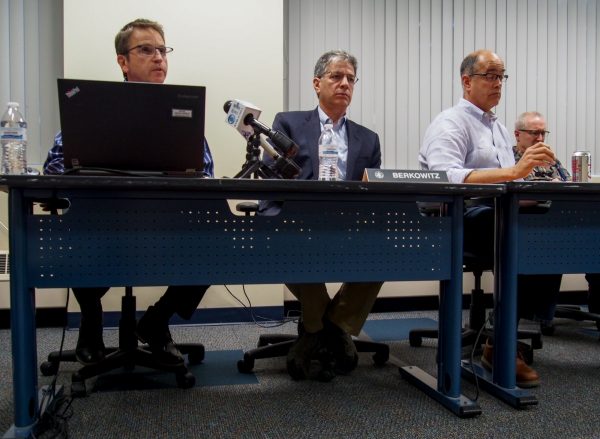
Officials in Anchorage are preparing for a $35 million budget gap, caused by a drop in state support and growing expenses for the city’s work force.
During a meeting Friday, the administration offered its plan to close that gap with a combination of property taxes, cuts to nearly every city department, and dipping into a small budget surplus from last year.
“We won’t be able to afford everything that we’d like to do, so we’re really gonna have to make some tough choices,” said Lance Wilber, director of the Office of Budget and Management for the city.
Part of the proposed plan is trimming positions and budgets from within each city department. Those range from as little as a $9,000 cut to the Public Works Administration to nearly $926,000 less for the Fire Department.
The reductions proposed at this early stage in the process are a preliminary attempt by the administration to figure out where it can shed jobs and costs.
“We actually identified which departments, how many people, whether they’re filled or unfilled — and it’s a combination of both,” Wilber said.
One of only two departments to grow is the Anchorage Police Department, up about $3.14 million this year from the addition of 56 new officers by year’s end. The administration is on pace to fulfill a campaign promise from Mayor Ethan Berkowitz to rebuild the force to more than 400 officers. In comments during the presentation, Berkowitz told assembly members that depending on attrition in the year ahead the department could have between 430 and 450 officers by the end of 2017. But now the bills are starting to be due. The larger department makes up the biggest share of the growth in this year’s budget, which is up a little over one percent from last year, from $497 to 502 million dollars.
The largest share of the city’s budget gap is from growing costs for labor, healthcare, retirement contributions, and remaining work on the SAP software project. On top of that, there’s another $15.4 million in state dollars that won’t come in this year, some from programs like Community Revenue sharing that other towns and cities across the state will struggle with in the months ahead.
Officials in Anchorage are pursuing a number of different avenues to bring in extra revenues. The current budget proposal includes a modest increase of $4.5 million overall from property taxes; the owner of a $300,000 home would pay $46 more on her or his tax bill. The administration expects new tax revenues from cannabis to be around $2.3 million, a dividend from the trash utility to bring $1.8 million, and plans on using $8.9 left over from a budget surplus last year.
But there’s also the gradual retreat in state services. The Department of Transportation is preparing to reduce snow plowing along state-owned roads in Anchorage, which leaves municipal officials expecting they’ll have to cover more of them, but with fewer staff.
“It’s not that they’re not going to get done,” Wilber said after the meeting was over, “it’s just that it’s going to take a little longer to do.”
Instead of plow-outs taking 72 hours, for example, Wilber said its likely to be closer to 80 or 84 hours.
The administration and assembly will spend the next six weeks ironing out details before a final budget is approved in mid-November.
Zachariah Hughes reports on city & state politics, arts & culture, drugs, and military affairs in Anchorage and South Central Alaska.
@ZachHughesAK About Zachariah




